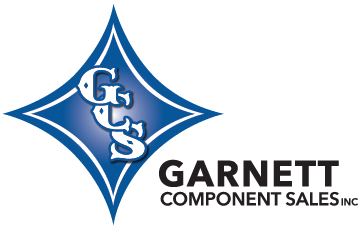Injection molding plays a huge role in how parts are made across a range of industries. From medical tools and consumer products to automotive components, this process helps teams produce large quantities of consistent parts. It’s fast, accurate, and works well for both simple and more technical pieces. When everything runs the way it should, injection molding delivers smooth surfaces, clean edges, and dependable strength.
But imperfections do happen. Common surface defects like lines, marks, or rough patches can affect a part’s function and look. These problems don’t always show up right away, but once they do, they raise questions about quality and reliability. Fixing them means understanding their causes, knowing what to check during production, and making small adjustments early in the process. It’s not always about starting over. Sometimes it’s about fine-tuning little details that make a big impact.
Common Surface Defects in Injection Molding
Surface defects happen more often than people think. Even a slightly off mold design or shift in processing temperature can trigger issues that show up on the face of a part. While these problems can seem small at first, like a few lines or uneven edges, they often signal deeper process imbalances that can become costly if ignored. Knowing what you’re looking at is the first step toward solving it.
Here are some of the most common surface defects that can show up during injection molding:
– Flow lines: These look like streaks or waves and usually form when the molten plastic moves too slowly or cools too fast as it flows through the mold.
– Sink marks: Seen as depressions or dimples, they often appear where the material is thicker and doesn’t cool evenly.
– Weld lines: These appear where two flow fronts meet and don’t bond well, sometimes leaving a visible seam that also weakens the part.
– Vacuum voids: Tiny air pockets that get trapped during molding, leaving small bubbles beneath the surface that can weaken the structure or cause cracks later.
For example, imagine a plastic gear used in a motor assembly. If it has tiny voids hidden inside from rushed cooling or trapped gas, it might pass visual inspection but fail under stress when the part starts spinning in real use. That’s the kind of failure that’s easier to prevent than fix afterward.
Each type of defect is usually tied to a specific part of the process. Whether it’s temperature control, flow rate, mold design, or even the type of plastic used, one or more missteps cause these visible and sometimes hidden problems. Spotting them early saves more than just scrap. It helps build stronger, longer-lasting parts.
Preventing Surface Defects With Better Processing
The good news is most surface defects can be reduced or avoided with the right steps up front. Many issues come down to how the mold is built and how the material flows through it. The more you can fine-tune these things during setup, the less likely you are to run into problems on the production floor.
Here are a few ways to lower the risk of surface defects:
1. Mold Design:
– Make sure the gates and runners are placed where they allow even flow of material.
– Add venting to release trapped air more easily.
– Include smooth transitions and reduce tight corners that slow flow or cause turbulence.
2. Processing Variables:
– Adjust injection speed to avoid hesitation lines or weld lines.
– Control mold and melt temperatures to keep the material flowing consistently without cooling too fast.
– Set proper holding pressure so parts don’t shrink or pull inward as they set.
3. Material Choices:
– Use resins that match the part’s needs. Some materials are more prone to warping or sink marks.
– Check moisture levels if the resin is sensitive to it, as excess moisture can cause bubbles or surface streaks.
It’s also important to pay attention to cooling time. Rushing through cycles to boost output may seem efficient, but it can backfire when defects show up and parts need to be remade. Slowing down for a cleaner result usually ends up saving time overall. Getting things right from the start helps keep injection molding services consistent and reliable.
Fixing Surface Defects After They Occur
Even the best planning won’t stop every issue from popping up. When surface defects do happen, it’s important to trace the problem back to its source instead of covering it up. Quick fixes might work for a few cycles, but unless the root cause is solved, the problem will return.
Start by figuring out where the issue appears. Does it show in one mold cavity? Is it happening across many parts? This helps determine if it’s a tool issue or something related to processing settings.
Check these common causes:
– Mold temperature: Make sure zones of the mold aren’t overheating or cooling too quickly.
– Injection speed: Moving too fast or too slow can cause hesitation marks or visible streaks.
– Holding pressure and time: If the pressure isn’t high enough or held long enough, sink marks or internal voids can form.
– Venting: Poor ventilation increases the chance of trapped air and surface burns.
Imagine your parts show weld lines around the center. That usually means two flow fronts are meeting but not bonding. Increasing the mold temperature or changing the gate location may give the material more time to fuse properly.
Testing one variable at a time makes it easier to pinpoint what works. Use small tool trials, visual inspections, and quality checks to confirm if the fix truly worked. Random tweaks make results harder to track and often introduce new problems.
The Value of Professional Injection Molding Help
Even when your team knows the equipment and materials well, there’s real value in working with experienced professionals for complex or high-volume production. Skilled injection molding partners bring a fresh perspective, backed by years of practical experience. They can help improve your process design, troubleshoot faster, and set up controls to avoid repeat problems.
Professional services also include access to better testing methods, advanced tooling knowledge, and quicker resolution when defects start showing up. Rather than waste time on guesswork, you get solutions that stick.
This improves efficiency over time, but it also boosts your product quality. When you’re delivering parts that go into consumer goods, medical tools, or automotive assemblies, that level of reliability means fewer returns, less rework, and stronger customer trust.
Partnering with experts in injection molding reduces stress and helps you meet production goals without cutting corners on part quality. That peace of mind pays off long-term.
Why Attention to Surface Quality Makes a Difference
Skipping over surface defects to save time or hit production targets might seem harmless, but it usually leads to bigger issues down the road. Bits that look okay but are weak inside can fail under normal use, compromise safety, or cause issues in the larger assemblies they support.
Clean surface finish isn’t about looks. It shows that your process was steady and your design decisions made sense. It often reflects the health of your overall workflow. A smooth, solid part means temperature, pressure, and cooling were balanced, and material flow was consistent from fill to pack-out.
When you’re producing parts day after day, a small error can repeat across thousands of units. That’s why surface quality should be watched just like size, shape, or performance.
Fixing specific problems is great. Adjusting your process so those problems don’t show up again is even better. It’s about building a system that supports long-term results, not just short-term success.
At Garnett Component Sales, our goal is to support production teams with injection molding solutions you can count on. From preventing flow lines to solving tough weld line issues, we help you deliver cleaner, stronger results on parts that matter. Consistency beats luck every time. Pay attention early and build parts you can trust.
For reliable and efficient production that keeps your parts consistent and high-performing, explore our injection molding services. At Garnett Component Sales, our team is here to help you eliminate surface defects and stay on track with dependable results. Reach out to get started on your next project.




